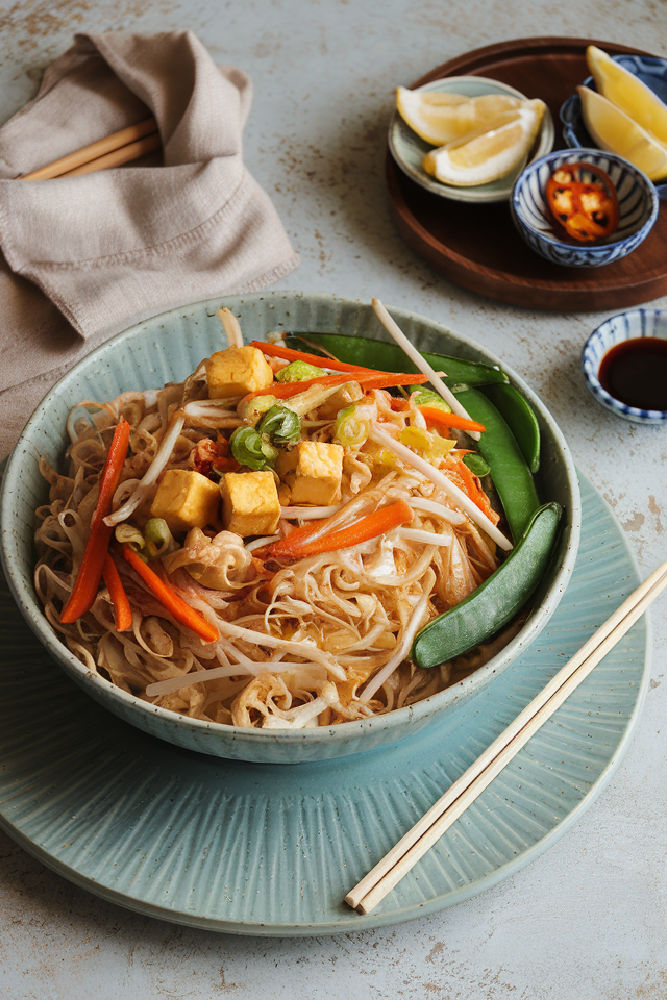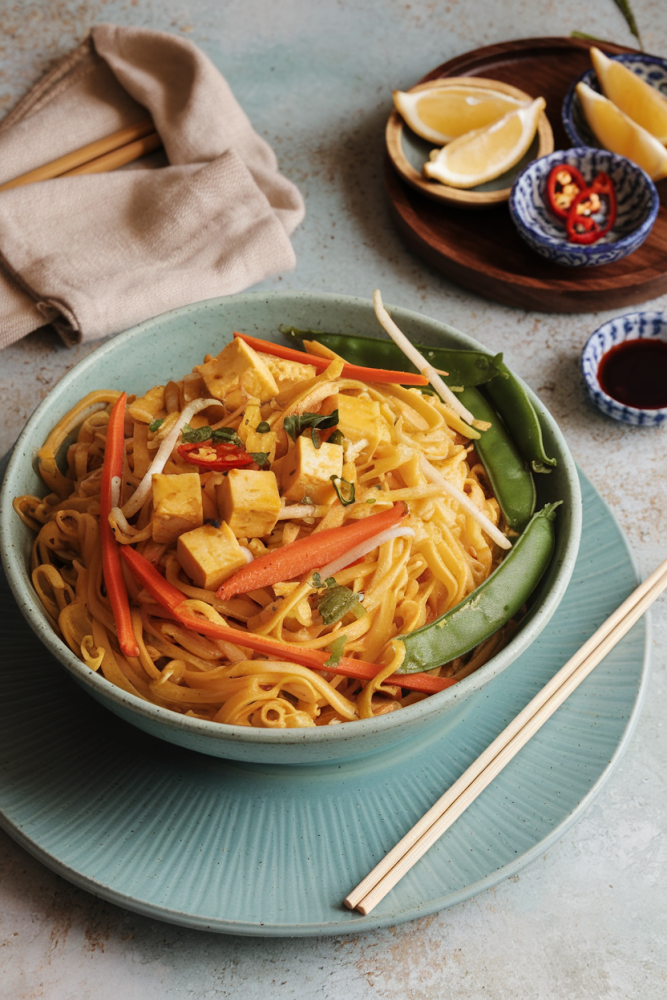
These Vegan Singapore Noodles are flavorful, colorful, and easy to make home. This popular stir-fry dish is packed with vegetables and seasoned with curry powder, perfect for a quick plant-based meal that’s better than takeout.
Why You’ll Love This Recipe
Noodles, a versatile pantry staple, have become a source of culinary adventure since moving to Singapore. This recipe is one of my favorites for its simplicity, vibrancy, and lightness—all thanks to rice vermicelli.
Inspired by hawker center dishes and adapted to a vegan lifestyle, these noodles are flavorful, easy to prepare, and perfect for any occasion, from quick lunches to sharing with guests.
You can customize your vegan Singapore noodles with your favorite vegetables or protein like tofu or tempeh.
Vegan Adaptation and Ingredient Choices
This entirely plant-based version uses firm tofu as a protein-rich alternative and rice noodles to keep it light and gluten-free. The dish is flavored with garlic, curry powder, and soy sauce, offering a balance of spice and umami without animal products.
Colorful vegetables like carrots and sugar snap peas bring texture and freshness, while fried shallots or spring onions add extra crunch.
Changes to the Original Recipe
Singapore noodles are widely known but likely originated in Hong Kong rather than Singapore. This version adapts the classic stir-fry into a lighter, vegan-friendly format, using less oil, no eggs or meat, and easy-to-find ingredients.
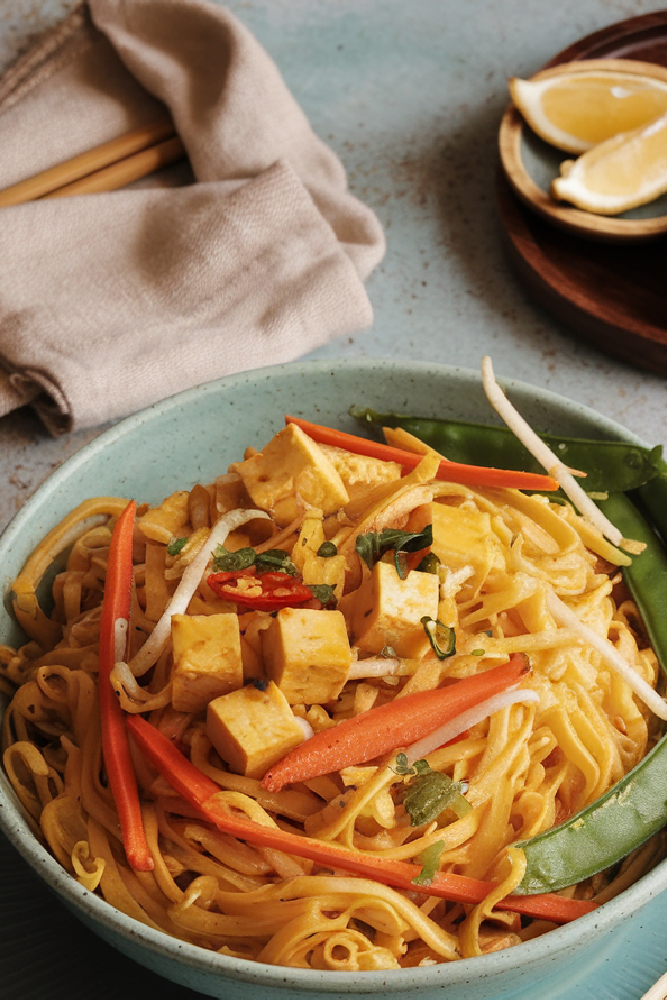
Ingredients
For the Noodles and Vegetables
- 200 g vermicelli rice noodles
- 1 tablespoon vegetable oil
- 1 medium onion, halved and thinly sliced
- 3 garlic cloves, thinly sliced
- 1 carrot, finely sliced
- 125 g sugar snap peas, ends trimmed
- 500 g firm tofu, drained and cut into chunks
- 1 spring onion, cut into thin strips
- 1 red chili, deseeded and thinly sliced
- 2 tablespoons crispy fried shallots (optional)
For the Seasoning
- 1½ tablespoons Madras curry powder
- 1 teaspoon ground turmeric
- 1 teaspoon fine sea salt
- 2 teaspoons white sugar
- 3 tablespoons light soy sauce
- 2 tablespoons water (to mix the seasoning)
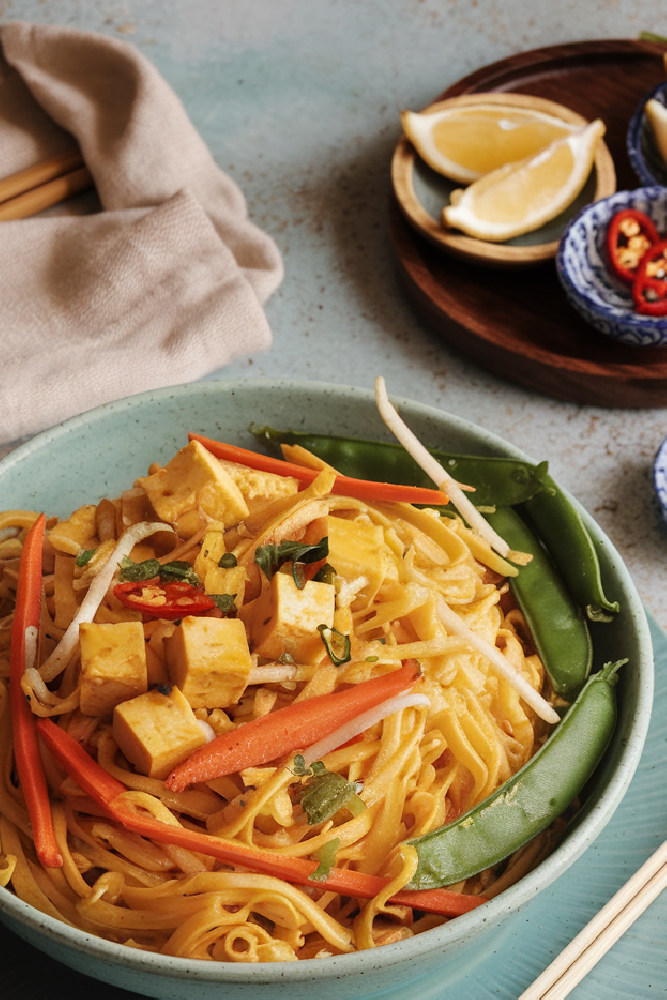
More About the Ingredients
Rice noodles — Light, gluten-free, and fast to cook. Be sure not to overcook them or they’ll become mushy. Follow package instructions carefully.
Tofu — Use firm tofu, drain it well, and lightly fry it to keep the cubes intact. Tofu absorbs flavor beautifully and adds protein.
Chili — Adjust the spiciness to your liking. Remove seeds and veins for a milder flavor, or keep them in for extra heat.
Soy sauce — Use light soy sauce to season without darkening the dish. It lets the colors of the vegetables and noodles remain vibrant.
Curry powder — Madras curry powder works well, or you can make your own with coriander, turmeric, cumin, fennel, and chili.
Spring onion — Used raw as garnish or lightly fried to add aroma and color. Adds freshness and a mild crunch.
Sugar snap peas — Use tender ones; they can be fibrous and tough if they’re too mature.
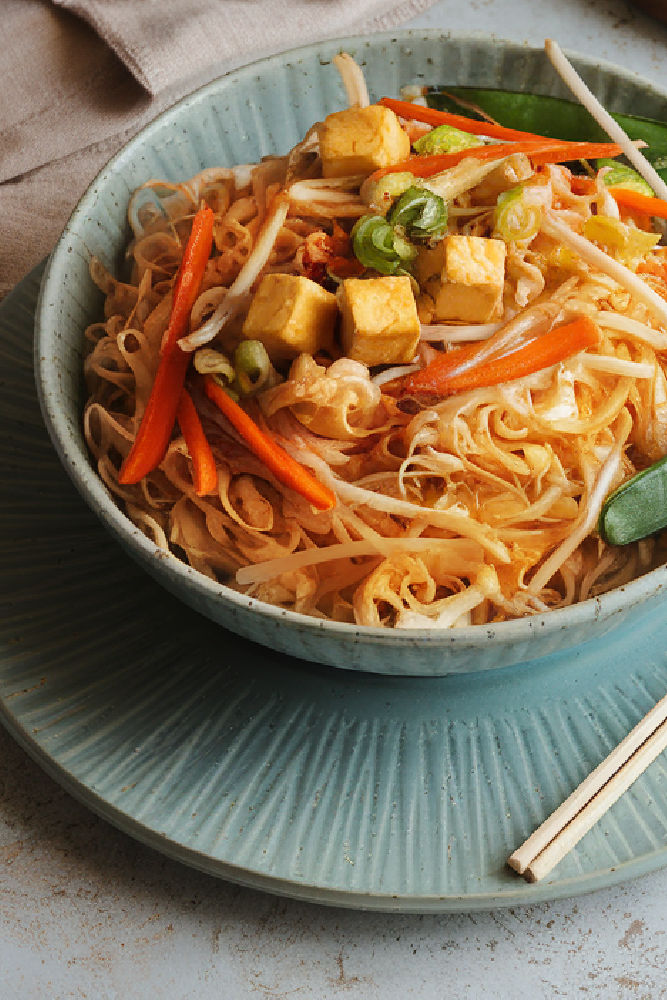
Tips for Making This Vegan Singapore Noodles
- Don’t overcook the rice noodles—they only need a brief soak or boil.
- Slice the garlic and onion thinly to avoid burning and to release maximum flavor.
- Use a wok or a large nonstick pan and cook over high heat so everything stir-fries quickly and evenly.
- Cut the carrot into very thin slices so it cooks through in just a few minutes.
- Avoid olive oil—it overpowers the flavor. Use a neutral oil like sunflower or canola.
- Make sure the tofu is dry before frying so it crisps up nicely and holds its shape.
- Garnish with fresh toppings like spring onion, chili slices, and crispy shallots to add color and texture.
Instructions
- Prepare the noodles according to the package instructions. Drain and set aside.
- In a small bowl, mix all the seasoning ingredients with 2 tablespoons of water.
- Heat the oil in a wok or large frying pan over medium-high heat.
- Add the onion and garlic and stir-fry for 1 minute.
- Add the carrot and sugar snap peas. Stir-fry for 2 more minutes.
- Add the tofu and the seasoning mixture. Stir well and cook for 5 minutes.
- Add the noodles and stir-fry for another 2 minutes.
- Finally, add the bean sprouts and cook for 1 minute.
- Turn off the heat and transfer the mixture to a large serving plate or tray.
- Garnish with spring onion, chili, and crispy fried shallots if using. Serve hot.
Serving Suggestions and Culinary Pairings
Serve these noodles family-style on a big tray to share, or portion them into individual bowls. You can also place small bowls on the side with extras like chopped chili, soy sauce, lemon or lime slices, and sesame seeds for guests to customize their own servings.
This dish pairs wonderfully with a chilled herbal tea or a light soup for a complete meal.

